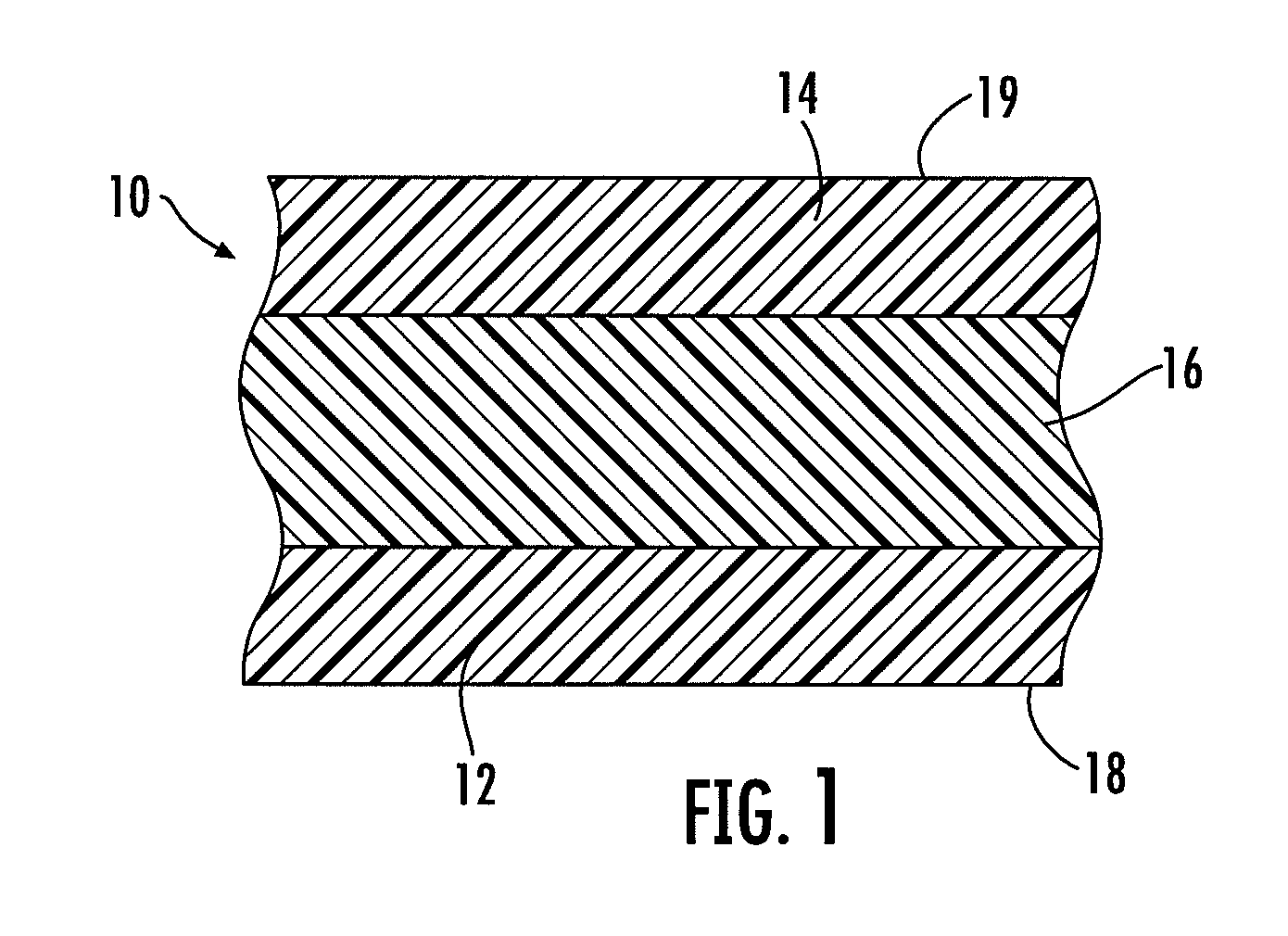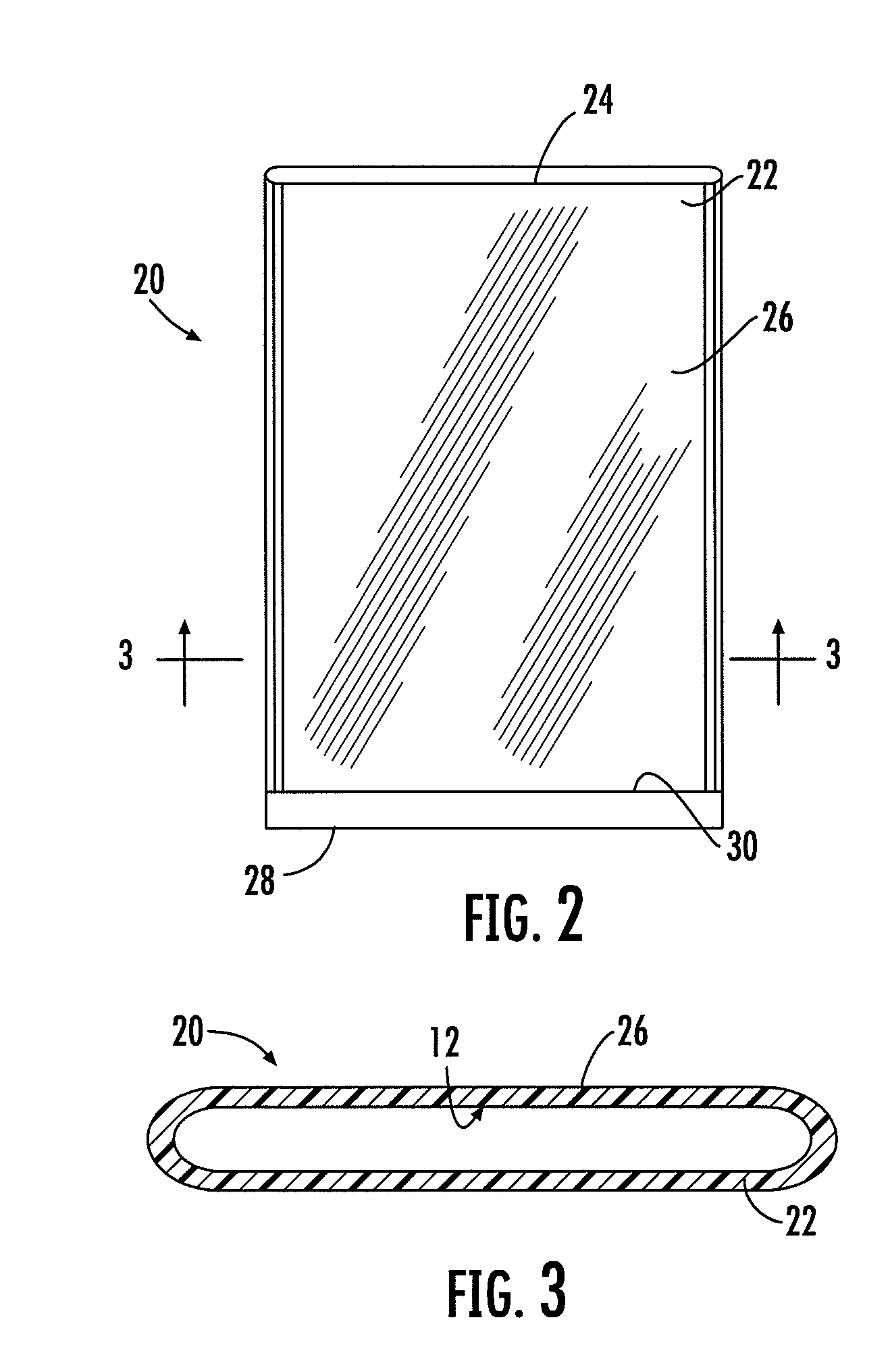Multilayer Film Having High Oxygen Transmission and High Modulus
a multi-layer film, high modulus technology, applied in the direction of packaging foodstuffs, packaged goods types, other domestic articles, etc., can solve the problems of not meeting the performance criteria, packaging may tend to stretch and become distorted during the severing process, and can produce serious illness risks for consumers of seafood. , to achieve the effect of high modulus, high oxygen transmission rate and high thickness
- Summary
- Abstract
- Description
- Claims
- Application Information
AI Technical Summary
Benefits of technology
Problems solved by technology
Method used
Image
Examples
examples
[0101]Six multilayer films were made by a cast line extrusion process. The multilayer film comprised three layers that were coextruded using a Randcastle extruder. The multilayer films were not oriented. Examples 1 through 4 comprise a three layer film having SBS outer layers and a core of a low density ethylene-alpha-olefin copolymer elastomer having a density less than 0.90 g / cc. Example 5 comprises a three layer film having a SBS outer layer, LLDPE sealant layer having a density of 0.9155 g / cc, and a core layer comprising a polyethylene thermoplastic elastomer having a density of 0.868 g / cc. Example 6 comprises a three layer film having a SBS outer layer, a polyethylene plastomer sealant layer having a density of 0.901 g / cc, and a core layer comprising a polyethylene thermoplastic elastomer having a density of 0.868 g / cc.
TABLE 2Structure and Composition of Multilayer Films of Examples 1-6Gauge ofCompositionStiffeningGauge ofCompositionGauge ofof StiffeningLayerCompositionCore Lay...
PUM
| Property | Measurement | Unit |
|---|---|---|
| Length | aaaaa | aaaaa |
| Fraction | aaaaa | aaaaa |
| Fraction | aaaaa | aaaaa |
Abstract
Description
Claims
Application Information
 Login to View More
Login to View More - R&D
- Intellectual Property
- Life Sciences
- Materials
- Tech Scout
- Unparalleled Data Quality
- Higher Quality Content
- 60% Fewer Hallucinations
Browse by: Latest US Patents, China's latest patents, Technical Efficacy Thesaurus, Application Domain, Technology Topic, Popular Technical Reports.
© 2025 PatSnap. All rights reserved.Legal|Privacy policy|Modern Slavery Act Transparency Statement|Sitemap|About US| Contact US: help@patsnap.com



